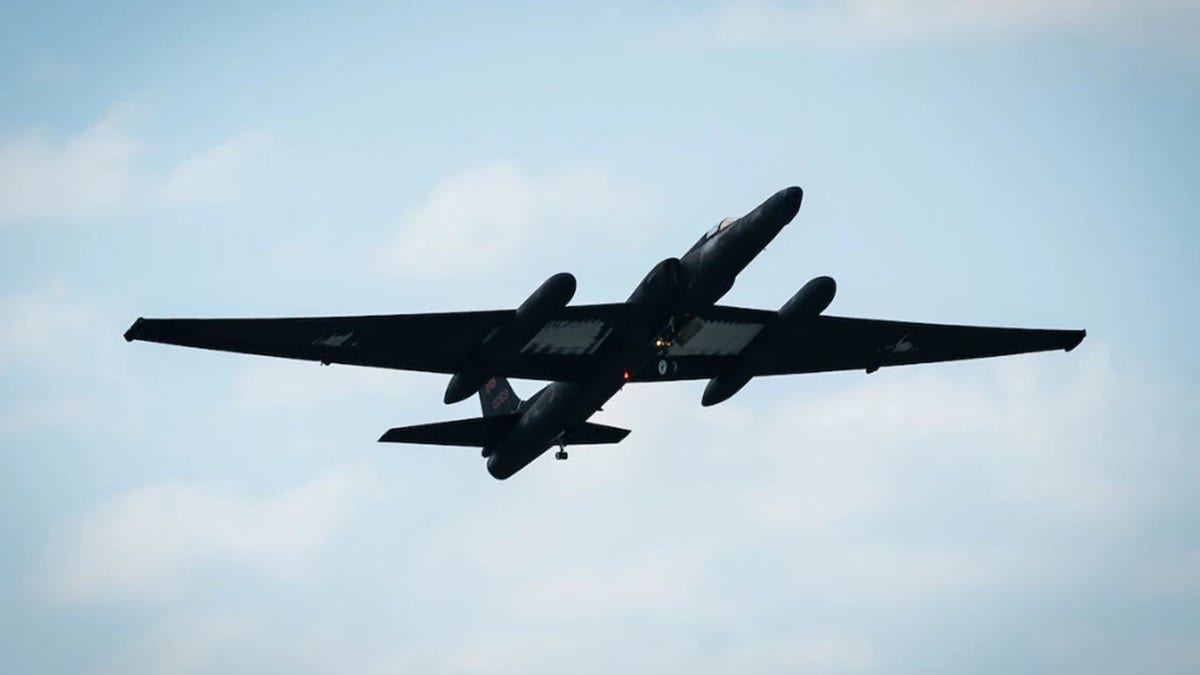US fighter jet shoots down Chinese spy balloon live on Fox
Rep. Mike Waltz, R-Fla., says Congressional Oversight has a lot of questions surrounding the U.S. response to the Chinese spy balloon on 'Fox News Live.'
The last time most, albeit older, Americans heard of the Lockheed U-2, Dragon Lady, was on May 1, 1960, when a USSR surface-to-air missile downed one piloted by Francis Gary Powers over the Soviet Union.
The U-2 was the 1954 brainchild of President Eisenhower, who sought eyes in the sky to learn whether America’s WWII ally turned Cold War adversary – which had, in 1953, detonated a hydrogen bomb – possessed the technology to produce high-end bombers and long-range missiles.
Beginning in 1956, Eisenhower sent the U-2 on high-altitude (up to 70,000 feet) missions over the USSR and learned, contrary to Soviet Premier Nikita Khrushchev’s bluster, that Russia was making "missiles like sausages," that his factories were producing not tanks, but tractors. With that intelligence, Eisenhower concluded an arms buildup, and potential war, were unnecessary.

A U.S. pilot looks down upon the Chinese spy balloon on Feb. 3, 2023. (U.S. Air Force)
Eisenhower’s successor, President Kennedy similarly avoided war when U-2 flights discovered Soviet nuclear capable medium and intermediate range ballistic missile installations in western Cuba on Oct. 14, 1962.
US DEFENSE DEPARTMENT TRACKING ANOTHER BALLOON TRAVELING BETWEEN HAWAII AND MEXICO
Contrary to Eisenhower’s 1956 calculation that the Soviets lacked the technology to reach the United States with its nuclear missiles, its Cuba-based missiles were now only 90 miles from Miami. For 13 days, U-2 flights kept Kennedy current on activity in Cuba as he successfully brokered a deal with the Russians.
Though the U-2 was thought to have an operational life of just two years, advances in Aviation Electronics Technology (AET or Avionics), the adoption of artificial intelligence tools, the mid-2022 transition from wet-film to digital cameras, and its September 2023 "Avionics Tech Refresh" makes the U-2 the first fully Open Mission Systems (OMS or "Interoperability and reuse… between weapon systems [and] platforms") compliant fleet, allowing it to plug-and-play new capabilities quickly and affordably to support future battlespace operations.

A U-2 Dragon Lady flies over Kadena Air Base in Japan on Jan. 23, 2019. (U.S. Air Force)
Its versatility has enabled the U-2’s use as a non-military aircraft and ensured its role in all America’s wars since its first test flight in 1955.
For example, it has served as a high-tech NASA platform for physics experiments and as a high-altitude mechanism for tracking deadly spruce bark beetles in Alaska’s forests. Plus, it has been used both as an aerial eavesdropping device and to survey dirt patterns for evidence of IEDs in Iraq and Afghanistan.
Earlier this year, on discovery by Montana ranchers of a strange satellite high over Big Sky Country, it was the U-2 that flew alongside and confirmed it to be a Chinese surveillance balloon, demonstrating that the U-2 can fly higher than any other publicly acknowledged, operational, Air Force air-breathing aircraft.
Thus, it came as a surprise to knowledgeable observers, both within and outside the U.S. military, when the Biden administration, at the end of last month, announced its plans to abandon use of the U-2 in fiscal year (FY) 2026, that is, on Oct. 1, 2025, less than two years from now.
Although the U.S. Air Force has considered retiring its U-2 fleet for some two decades, including in its FY21 and FY22 budget, its FY23 budget lacked specifics as to the divestment date, but did end modernization funds in FY25. Nonetheless, on Oct. 30, Secretary of Defense Lloyd Austin approved a work-around included in the National Defense Authorization Act, for FY2018, which barred the Air Force from terminating the U-2 fleet of 27 U-2S aircraft (its latest variant) and a few two-seat trainers unless it met certain stipulations.
Congress sought to ensure that, before dumping the U-2, the Air Force demonstrated that whatever "capability" replaced it costs less than keeping the fleet, but allowed a waiver if "a greater capability" was worth the increased cost.
Austin’s use of the "waiver" is suspect for two reasons.
First, its timing – just before two federal holidays (Veterans Day and Thanksgiving Day weekend), days after the House ended three weeks without a speaker and unable to transact business, and with the looming year-end business, including the FY24 appropriations – makes it appear as if Austin hopes to prevent a timely response from Congress.
Second, and importantly, the Air Force has no replacement for the U-2! Neither does the Air Force have the "constellations of smaller satellites" combined with commercial satellites that it argues is the future. Nor are its drones capable of performing the U-2’s reconnaissance missions.
The Biden administration’s timing could not be worse.
CLICK HERE FOR MORE FOX NEWS OPINION
As global tensions rise daily with continuing conflict in Ukraine, the potential for the Hamas war to spread in the Middle East, and Chinese Communist Party hegemony in the Pacific, the Air Force seeks to terminate and thus further degrade one of its key warfighting capabilities within its Intelligence, Surveillance, and Reconnaissance (ISR) programs.
The U-2 fleet is not just any "capability." It is the nation’s time-tested, reliable, responsive, adaptable and only self-protected ISR asset, which is hardly surprising given its ability to meet demands for strategic intelligence and satisfy aerial battlefield surveillance needs and its air-to-ground data capabilities.
Little wonder that, each day, combat commanders around the world demand more and more U-2 missions.
CLICK HERE TO GET THE FOX NEWS APP
This is the same Department of Defense that signed off on and presided over Biden’s disastrous, costly (in lives lost, allies deserted and military equipment abandoned), and tragic exit from Afghanistan. Congress was not given an opportunity to prevent that catastrophe and what it did to the nation’s world standing and war-fighting capabilities. It can avert this one.
Congress must prohibit the Department of Defense from killing the U-2.
William Perry Pendley, a public-interest lawyer for three decades with victories before the Supreme Court of the United States, served in the Reagan and Trump administrations. A Vietnam-era Marine Corps officer, his squadrons and their successors engaged in electronic warfare (EW) over Cuba, North Vietnam, and Afghanistan, and Iraq.






